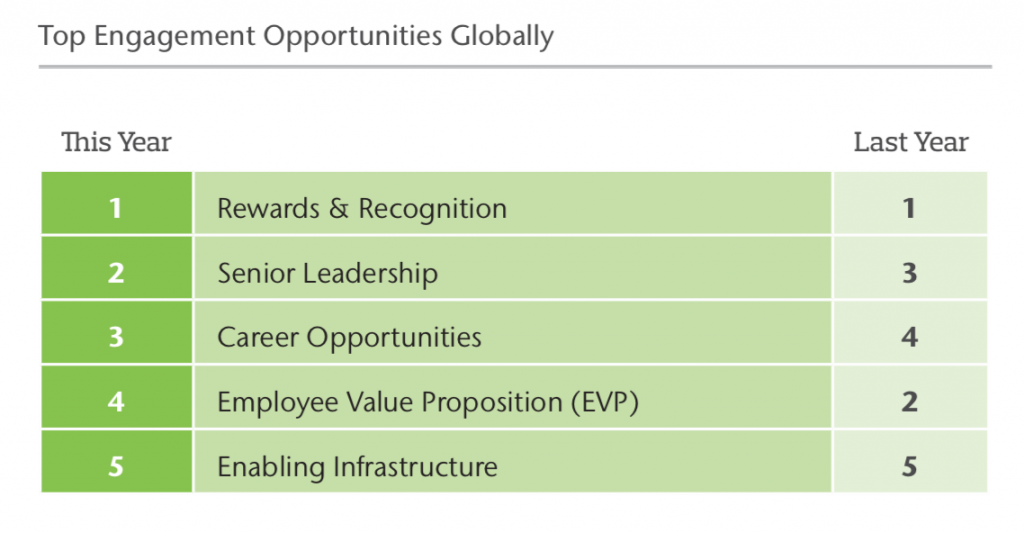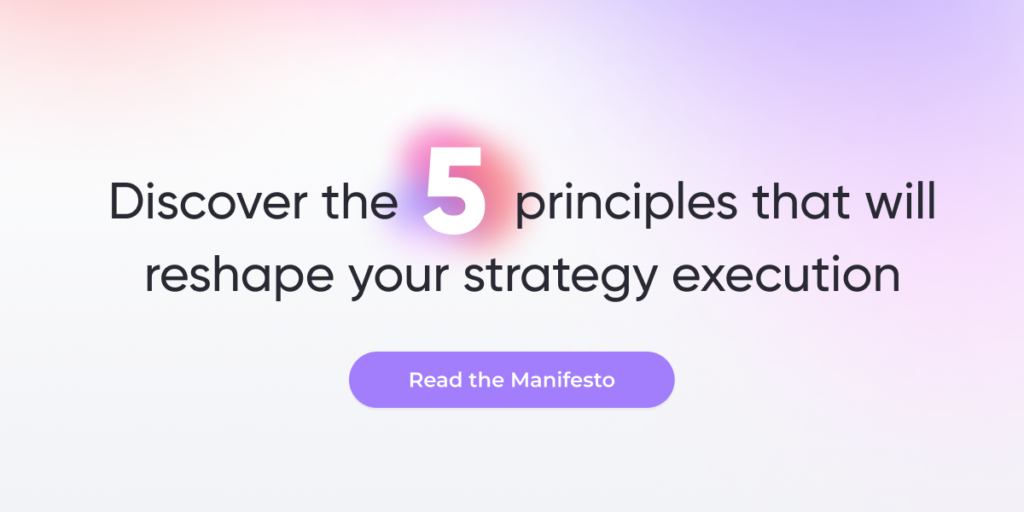And this is one of the problems with employee engagement. We try to quantify it as some sort of final number. Two digits that can use to use as a point of measure to see if it’s increasing or decreasing. A number that will tell if our coworkers are collectively engaged at work.
So my questions is this: “Can we please stop?”
Recently, Aon released its 2018 Trends in Global Employee Engagement. In this report, they announced that employee engagement “rebounds to match its all-time high.” What high is that you ask? 65%.
So per Aon, two out of three employees are engaged. But that’s not what’s important. Why? Because your business is different than the average. What is important is looking at the impact of engagement and the facts that lead to higher engagement. Let’s focus on that—not a number.
How should we define employee engagement?
Aon looks at 16 dimensions of work, including things that exist like Career & Development, Rewards & Recognition, Work Tasks, and some things that do not exist in real life like Work/Life Balance. But I digress.
Here’s what matters. Their index is composed of three areas:
- Say – employee advocacy
- Stay – likelihood that employees stick around
- Strive – a willingness to give extra effort
In Aon’s research, each of these areas improved. Meaning employees are more likely to talk about their company and products, stay with the same company, and put in some extra effort. This is engagement. A two-digit number is not.
The report breaks the research down geographically for those that are interested. But, spoiler alert, the results aren’t that dramatically different from regions around the world. What did change from last year to this year is the ranking of engagement opportunities. These are the areas that have the greatest impact on whether an employee will “Say, Stay, and Strive.”

Like last year, “recognition for contributions beyond pay and benefits” as part of Rewards & Recognition sits at the top. And this should surprise no one. What’s particularly interesting is that Senior Leadership is now the second-highest driver. This stat shows that employees want to hear from their leaders and understand the direction of the company. Rounding out the top five are career opportunities, employee value proposition (previously #2), and enabling infrastructure. It’s this last one that I would like to learn more about.

I believe internal communicators can lend a lot to helping build a more enabling infrastructure to the employee and the employee experience. And outside of career opportunities, communicators can also have positive impacts on recognition (awareness), senior leadership (visibility and alignment), and Employee Value Proposition (EVP).
So here’s my ask. Let’s stop defining engagement as a number. Let’s start defining it by what drives employees at your company to say, stay, and strive.
And if you need more help, reach out to us for a quick demo to learn how you can create the infrastructure and strategy to reach every employee.











